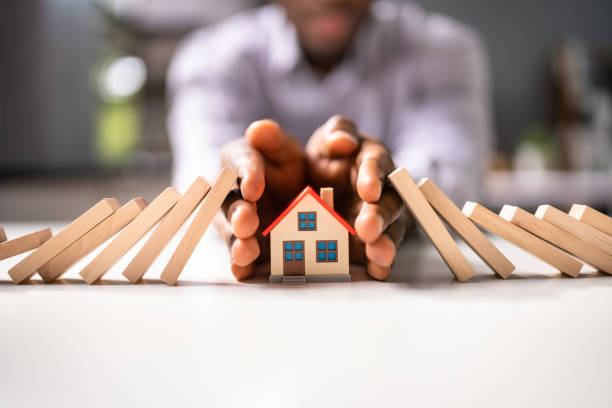What’s Not Covered on a Standard Homeowners Insurance Policy
 When you purchase a homeowners insurance policy, it’s easy to assume that it covers every possible scenario that could damage your home or belongings. However, this is not always the case. Homeowners insurance typically covers a wide range of risks, but certain situations and types of damage are commonly excluded. Understanding these exclusions is crucial for ensuring you have adequate protection and avoiding surprises when you need to file a claim.
When you purchase a homeowners insurance policy, it’s easy to assume that it covers every possible scenario that could damage your home or belongings. However, this is not always the case. Homeowners insurance typically covers a wide range of risks, but certain situations and types of damage are commonly excluded. Understanding these exclusions is crucial for ensuring you have adequate protection and avoiding surprises when you need to file a claim.
Certain Natural Disasters
While homeowners insurance usually covers many types of natural disasters, such as windstorms, hail, lightning, and sometimes even volcanic eruptions, there are notable exceptions. Events like earthquakes and floods are typically not covered under a standard policy. If you live in an area prone to these types of disasters, you may need to purchase additional coverage or a separate policy to protect your home and belongings.
Wear and Tear
Normal wear and tear over time is not covered by homeowners insurance. This includes gradual deterioration of your roof, plumbing, and appliances due to age or regular use. Maintenance-related issues like pest infestations or mold caused by neglected upkeep are also typically excluded. It’s important to maintain your home regularly to prevent these issues and to address any problems promptly to avoid potential denials of coverage.
Damage from Pests
Damage caused by insects, rodents, and other pests is generally not covered by homeowners insurance. This includes termites eating away at your wooden structures or rodents causing damage to insulation and wiring. Preventative measures, such as regular pest inspections and maintenance, can help mitigate these risks.
Certain Types of Water Damage
While homeowners insurance typically covers sudden and accidental water damage (like a burst pipe), it may not cover damage from chronic leaks, seepage, or flooding. Damage caused by floods, including overflowing rivers or heavy rainfall, is a common exclusion. Similarly, gradual damage from leaks in plumbing, roofs, or foundations that result from poor maintenance or wear and tear over time is generally not covered. Other exclusions may include sewer backups, sump pump failures, and water seepage through walls or basements.
High-Value Items
Most standard homeowners policies have limited coverage for certain high-value items such as jewelry, artwork, collectibles, and electronics. If you own items that exceed these limits, you may need to purchase additional coverage through a rider or separate policy to protect them fully.
Vacant or Unoccupied Homes
If your home is vacant or unoccupied for an extended period, typically more than 30 or 60 days depending on the policy, coverage for certain risks like vandalism, water damage, and theft may be limited or excluded altogether. You may need to obtain vacant home insurance to ensure continuous coverage during these periods.
While homeowners insurance provides essential protection for your home and personal belongings, it’s important to be aware of its limitations. Understanding what is not covered can help you make informed decisions about additional insurance options or preventive measures you may need to take. Reviewing your policy regularly and discussing your specific needs with an insurance agent can ensure that you have the right coverage for your home and peace of mind for your family’s future.
